|
|
|
| ||||
.jpg) Washunga of the Kaws(1) (3) Allow popups or Press CTRL and mouse. 1 |
.jpg) Arkansas City in 1879 when Prettyman arrived. The first gathering of Boomers attempting settlement of Indian Territory.(1) 2 | |||
.jpg) Pioneer show woman, 1890s Cheesecake from the frontier, an early example of Prettyman's work(1) (3) 3 |
.jpg) A group of Bommer leaders posed in front of "one of the best hotels". (1) 4 | |||
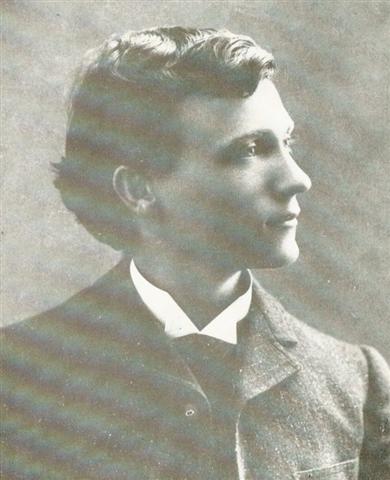 William S. Prettyman photograph by Bonsall, shortly after he started working. A headstand was used to hold him steady for the 12 seconds needed to expose the glass plate. (1) (3) 5 |
.jpg) On his own now, in a vehicle of his own design, about to cross the Cimarron River. (1) 6 | |||
.jpg) These Apache women exhibit the hostility of a proud, fierce people towards an encroaching civilization.(1) 7 |
.jpg) The Comanches could be seen slaughtering their beef allowance on the spot. Man seated is consuming it "hot".(1) 8 | |||
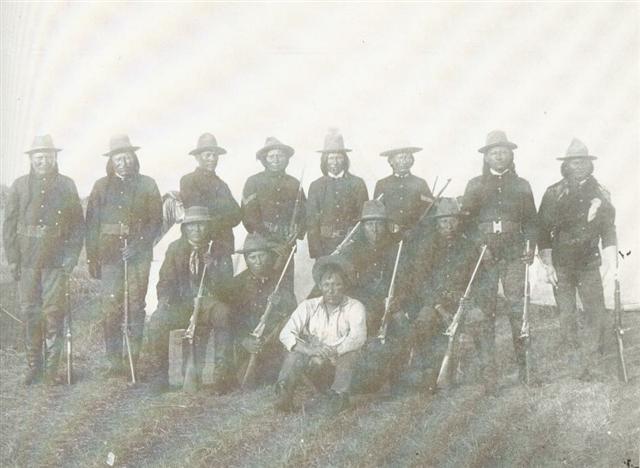 Cheyenne Indian police, 1884 helped the United States Army keep order among their kinsmen and drive out white intruders. (1) (3) 9 |
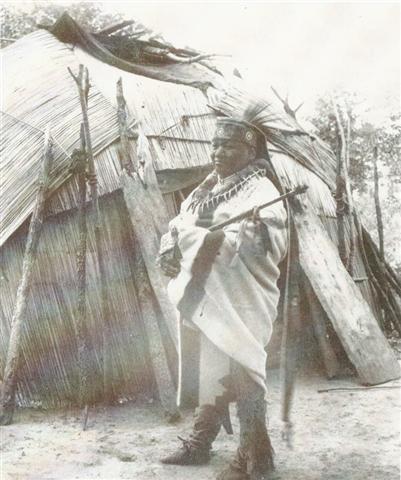 Sac & Fox Chief, Pa She Pa Ho, 1890, wanted nothing the whites had to offer. He wears a Hudson Bay blanket, an ancient otterskin crown, a bear claw necklace, and Great Lakes type moccasins. He carries a peace pipe fashioned above a tomahawk. (1) (3) (34)
| |||
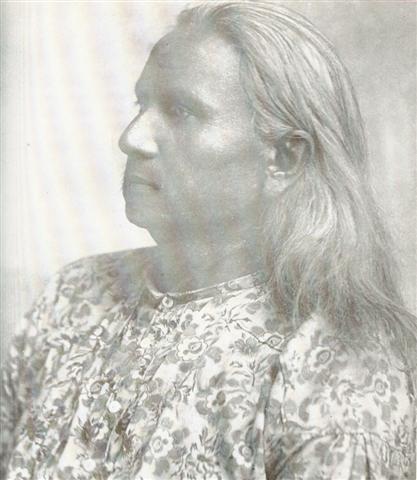 Wa Como, Sac & Fox Wacomo, the Sac and Fox orator. His long hair marked him as being outside the warrior group, and is unusual among his kind.(1) (3) 11 |
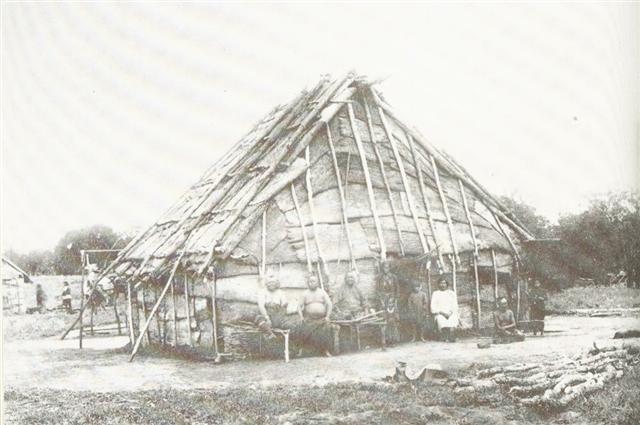 Sac & Fox bark house. South of Cimarron River, 1885 or 1889. Third from the left is Pa She Pa Ho the Sac Chief. (1) (3) (34) (61) 12 | |||
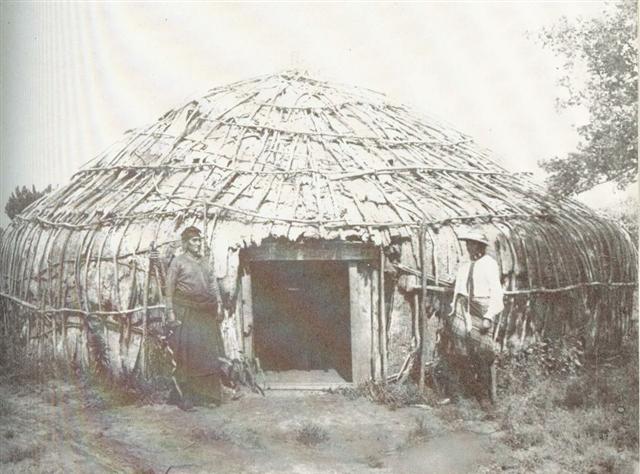 Kaw bark house on the Cimarron, 1885 (1) (3) (16) (61) 13 |
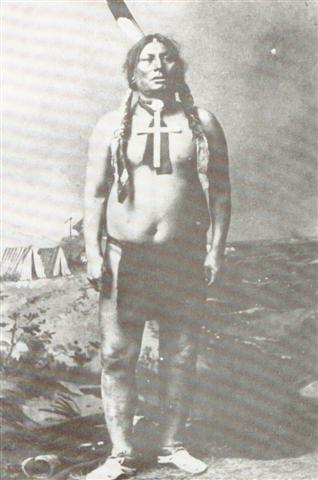 Gall, leader of the Sioux at little Big Horn, in fighting attire. This picture was in great demand at the time. (1) (3) 14 | |||
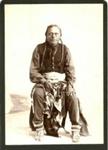 A Tonkawa Indian, the last and smallest tribe to arrive in the territory. (1) (42) 15 |
.jpg) David Tohee of the Iowas headed the most peaceful band of Indians not listed among the Five Civilized Tribes. 1885(1) 16 | |||
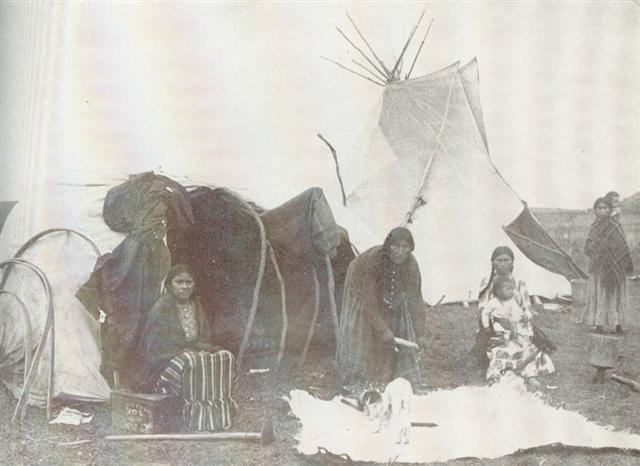
Pawnee camp. Shows tipi and hut. Cowhide is being readied for working. (1) (3) (33) 21 |
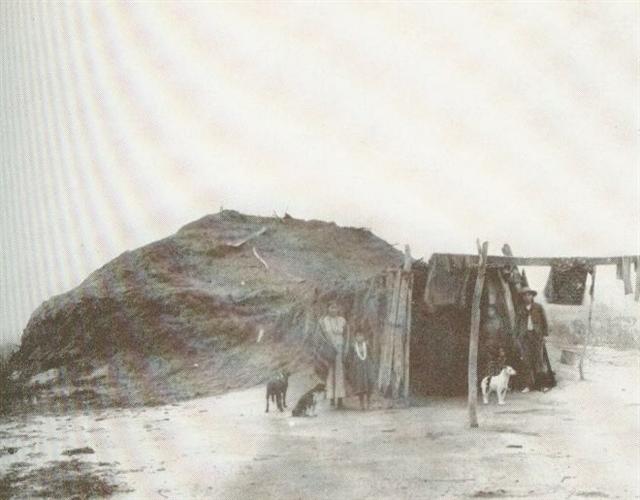 Pawnee Mud Lodge winter home in 1880 Standing with their dogs. (1) (3) (38) 22 | |||
.jpg) Pawnee family inside their tipi Summer home, canvas rolled back to catch breeze.(1) (3) (33) (38) 23 |
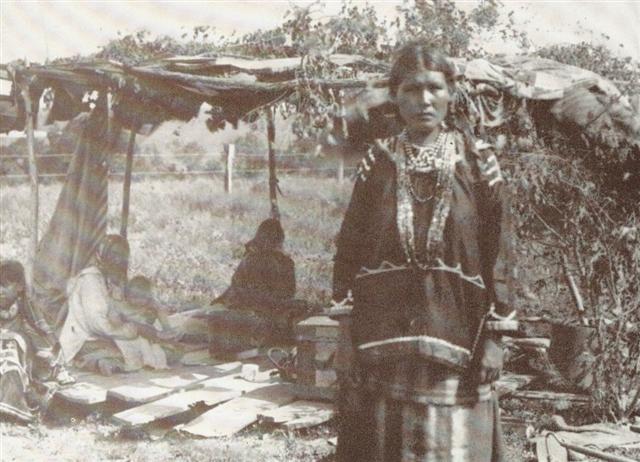 These Poncas are shown with their temporary abode in the Cherokee Outlet in 1887. Back of their brush arbor is a cattleman's drift fence, the first if not the most pernament evidence of settlement.(1) (3) (20) (32) 24 | |||
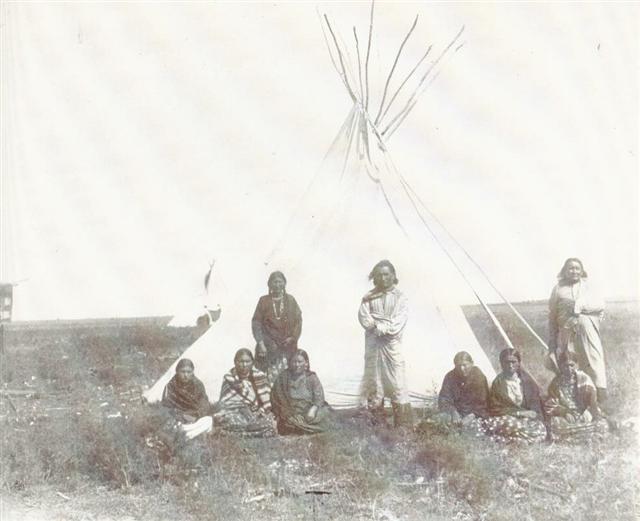 Ponca village. on left - Red Leaf and 4 wives. on right - stands Yellow and 3 wives. (1) (3) (20) (32) 25 |
.jpg) Ponca graveyard in 1884. Above ground burials were common (1) 26 | |||
.jpg) Iowas move out for a visit with their Otoe cousins. Leading horsemen carries a single scalp of a battle long past. (1) 27 |
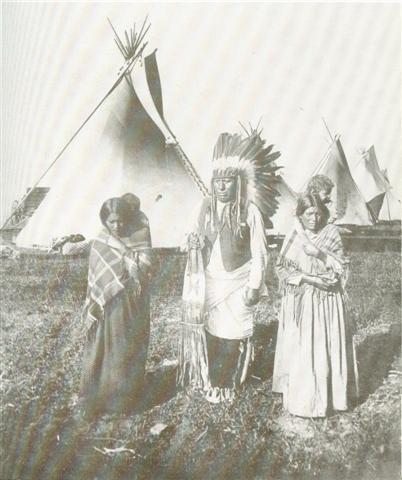 Ponca with two wives Comanche medicine against a backdrop of a prairie village. (1) (3) 28 |
|||
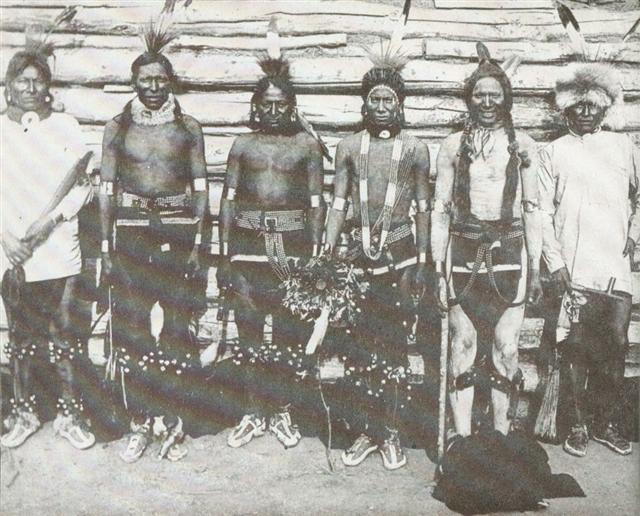 Cheyenne Indian Dancers very scantily dressed. (1) (3) (29)
| ||||
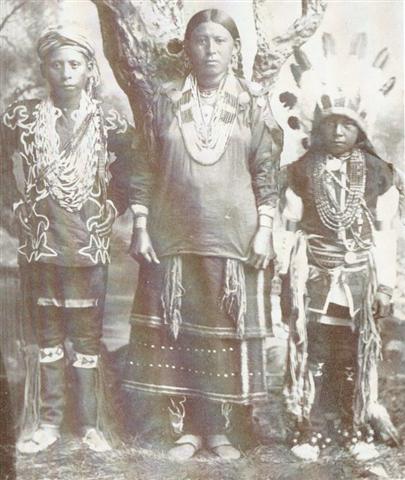 While the Poncas were no friends of the Sioux, they borrowed the dress . (1) (3) (4) (18) 31 |
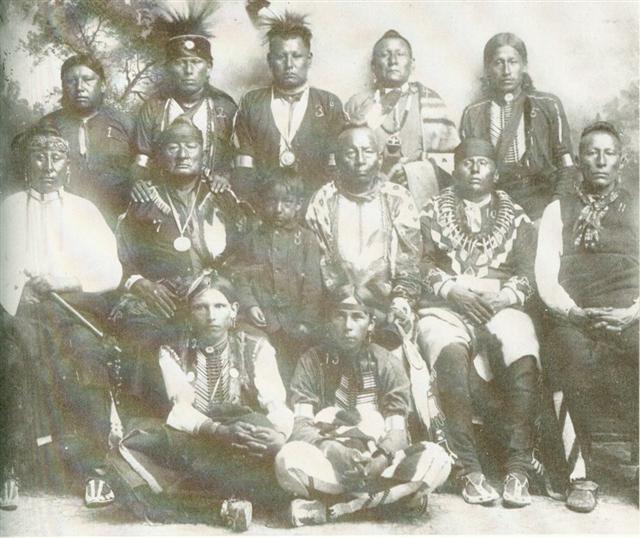 "The Royal Family" of the Osages, Osage Chiefs and medicine men from all bands - Great Osage, Little Osage, Black Dog, and Arkansas. Che To Pa is second from left in middle row 1887, 1888. (1) (3) (35) 32 | |||
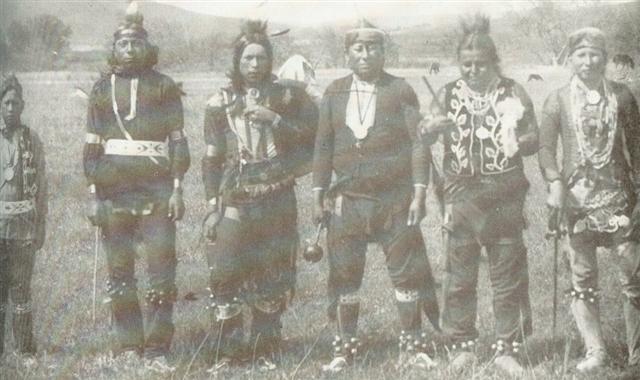 Osage dancers (1) (3) (35) 33 |
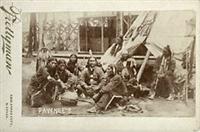 Pawnees seated in a semi-circle on tour with Pawnees Bill's Wild West Show about 1890 (1) (3) (33) (61) 34 |
|||
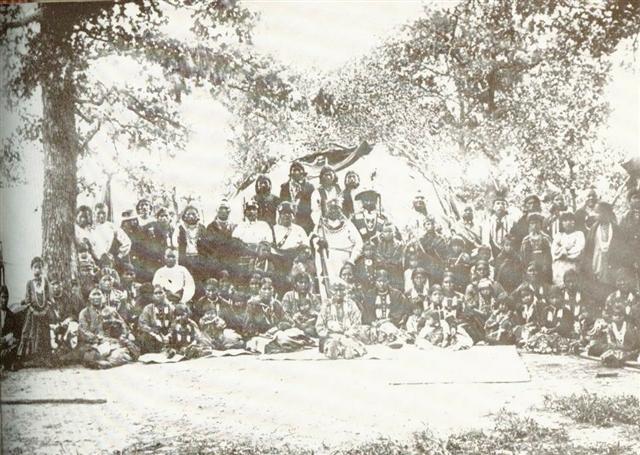 Sac & Fox Band Pa She Pa Ho, and his council of elders seated outside of a traditional cattail mat-covered shelter. The chief stands in front center in a white summer robe. Seated in the place of honor before him is his mother, then ( in 1884) 107 years old. (1) (3) (34) 35 |
||||
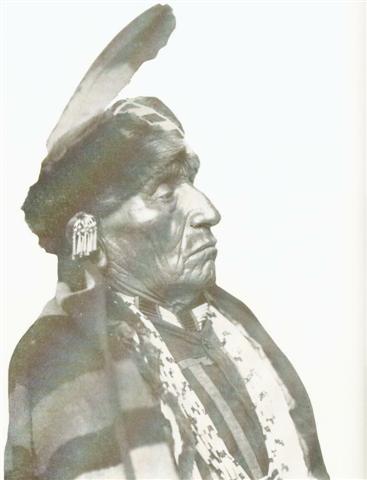 Ashunga, Chief of the Kaw or Kansa Indians. To many he looked like "the way an indian should" (1) (3) 39 |
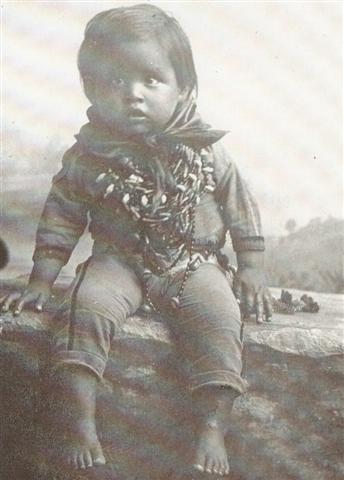 A Kiowa boy in indian made clothing shows the influence of the white solider's uniforms. The pin stripe on the side of the trousers is strictly army. (1) (3)
|
|||
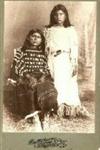 Kiowa Indian girls dresses adorned with elks teeth(1) (3) (40) 41 |
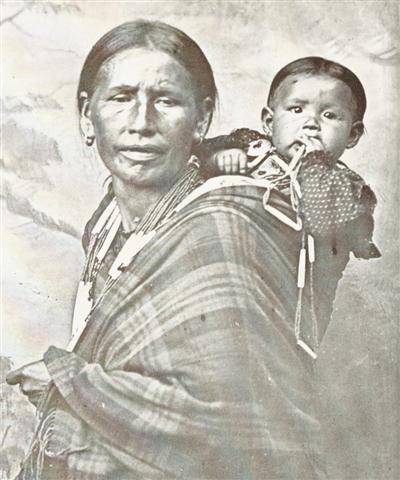 Betty Falls, with papoose, was married to a Sac. (1) (3) 42 | |||
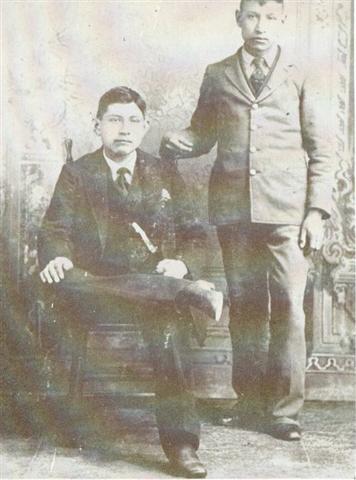 Osage - Charley Grant (1) (3) 44 |
||||
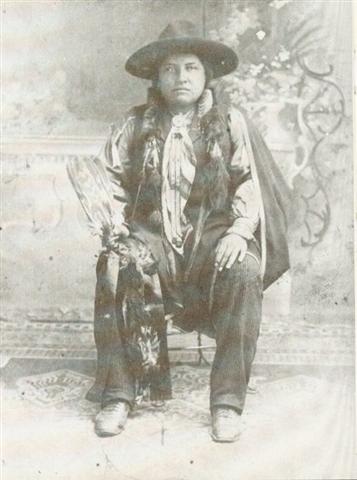 Osage - Charley Grant (1) (3) 45 |
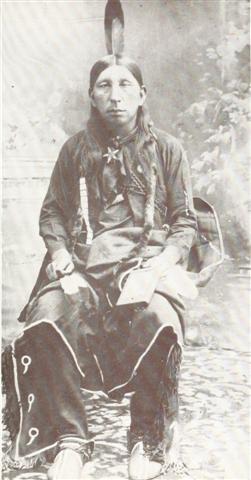 Osage - Grey Horse left hand - tribal roll, right hand - two eagle feathers, braids in hair - beaver skins (1) (3) 46 | |||
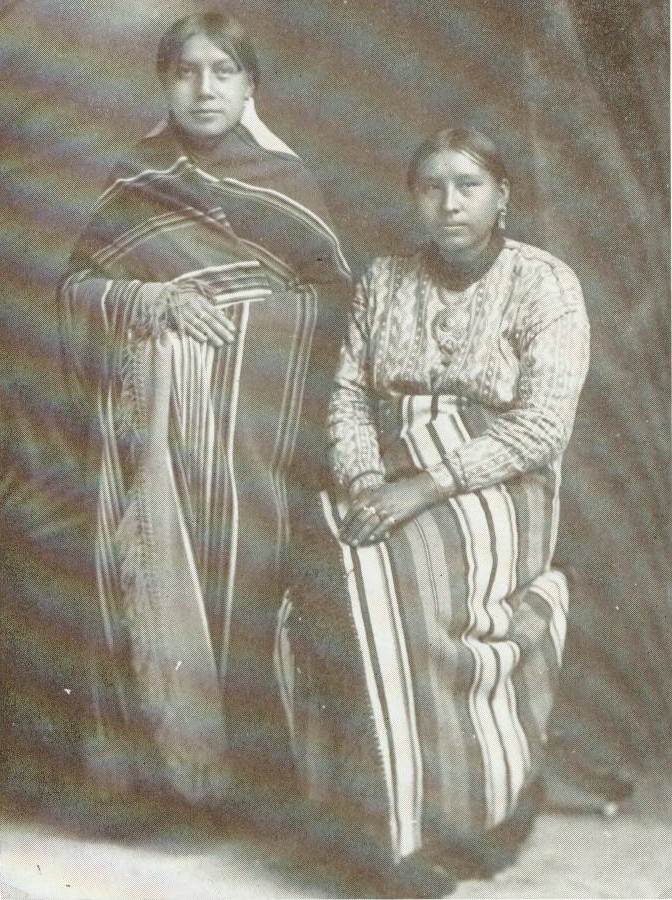 Two Osage Women (1) (3) 47 |
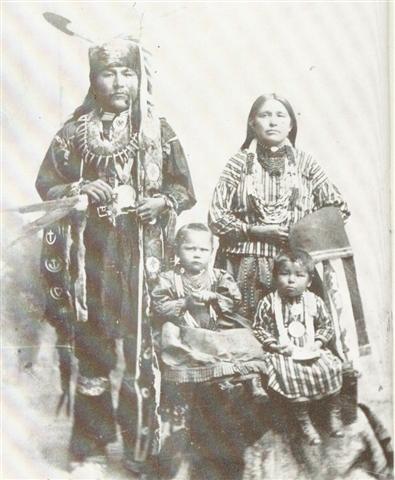 Otoe, Ma To Pak (White Bear; son of White Horse) of the Otoes with wife and 2 children. (1) (3) 48 | |||
.jpg) Medicine Horse, chief of the Otoes 1883 (1) 49 |
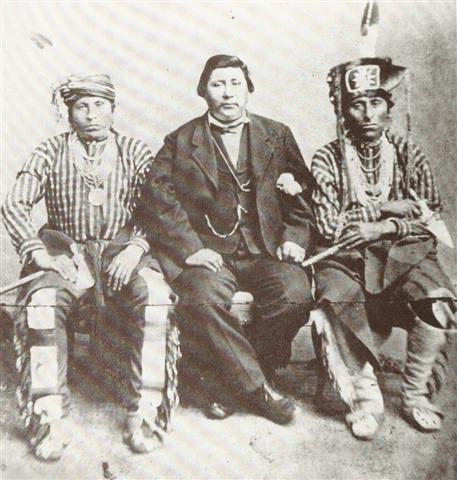 In center Barnaba, a Ponca-Ohaha interperter for the Otoes with Wa Tha Ka Ga on the left, and La Neway (Little Pipe) on the right. (1) (3)
|
|||
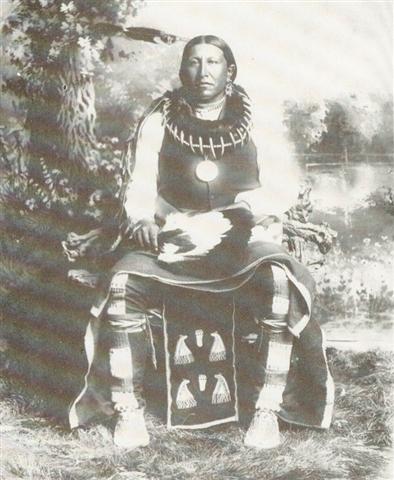 Eagle Chief, Pawnee, 1880 (1) (3) (31) 51 |
 Eagle Chief - Pawnee (31) 52 | |||
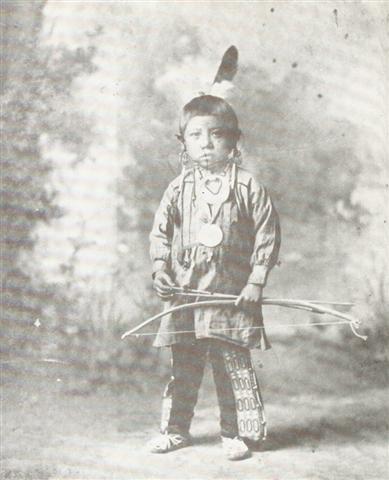 Wayne Headon, a young Otoe taken at 101 Ranch (1) (3) (39) 53 |
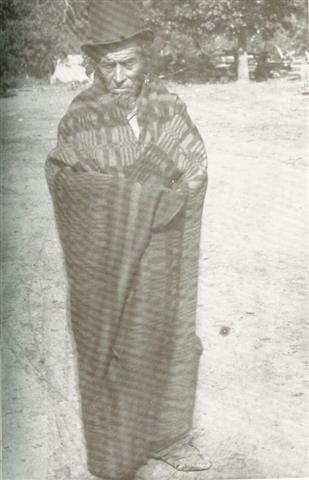 Bayhylle Baptist, oldest man in Pawnee Tribe. An interpreter and scout for the Pawness during the Sioux wars, 100 years old 1885. (1) (3) 54 |
|||
.jpg) War Chief of the Pawnees in center, William Pollock on left, Ralph Weeks on right. (1) 56 | ||||
.jpg) The Poncas prepare for the Sun Dance about 1883. Each candidate is painted and carries a feathered spear in his mouth (1) 57 |
.jpg) Part of the Sun Dance ritual, shortly after taken discontinued and banned by the Federal Government. (1) 58 | |||
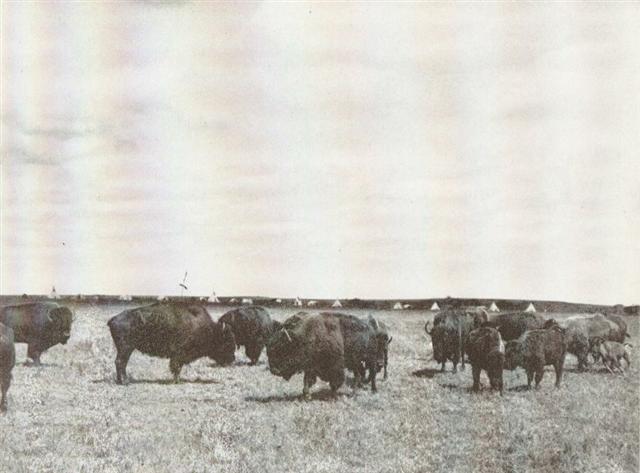 In 1890 when the Ghost Dance was at its height, Prettyman made a distant photograph of a Ponca village and then superimposed a photo of a herd of buffalo in the foreground. The Indian Messiah had said that the buffalo would reappear and the white man would disappear. (1) (3)
|
||||
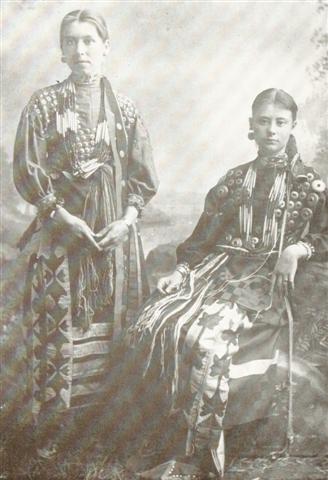 Potawatomi girls (1) (3) 61 |
||||
 Kickapoo Indians pose before Prettyman's printed drapes in Shawnee country. Standing left: Ike Steel, Joe Whipple, Chief Howling Wolf, Kiowa; Chief Bigfoot, Miss Celene Grey, Pink Shoferd. Seated: Oc-a-naxie's wife and child, and Hunger Wilkerson. Others not indentified. 1884- 89. (10) 63 |
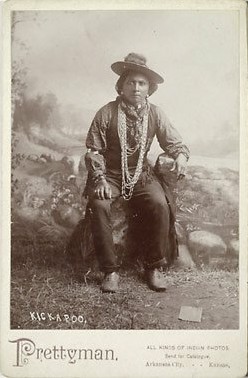 Kickapoo man holds a cigar (3) (10) (36) 64 |
|||
 Sac And Fox Native American Indian. Proudly wearing an American Peace Medal (14) 66 | ||||
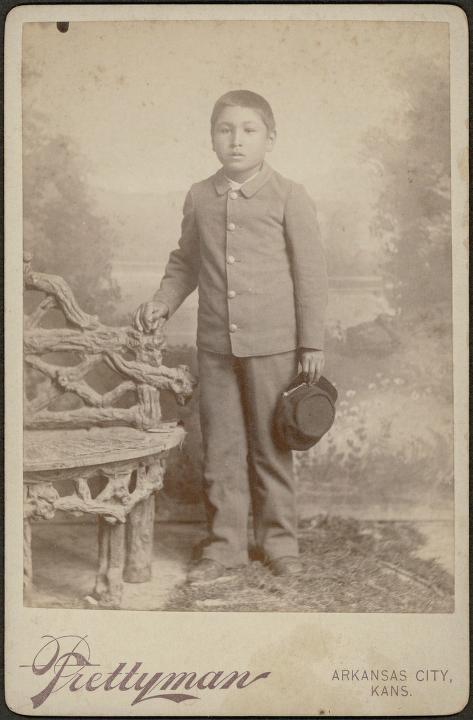 Indian boy in government school clothes(4) 67 |
 Pawnee Indians Adam Clark, Harry Moore(4a) 68 | |||
 Indian School boys drinking(4b) 69 |
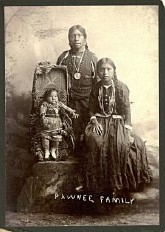 Pawnee family Father is wearing a peace medal, baby in a cradle board. (3) (41)
| |||
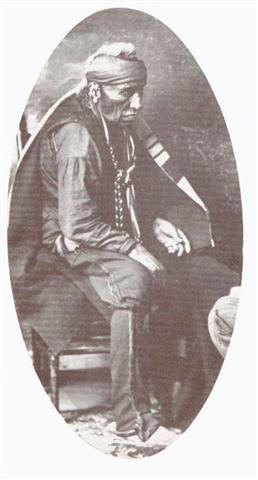 Kaw Indian - Washunga Dramatic end of an era, a survivor of another generation sits perplexed as he attempts to understand the proposals of the white Indian agent, just outside of the picture, for his future. (1) 76 | ||||
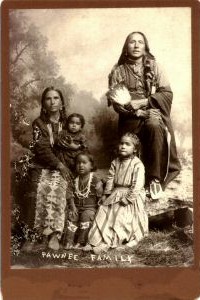 Ponca family; Red Leaf (3) 84 |
||||
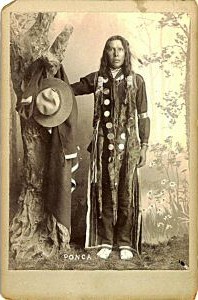 Ponca "Dandy" (3) (32) (43) 85 |
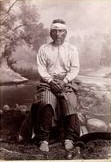 (18) 86 | |||
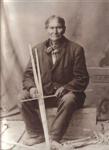 Geromino wearing the clothes of the white man seated upon a wooden box, shaving an arrow shaft with other finished items laying about (51) 87 |
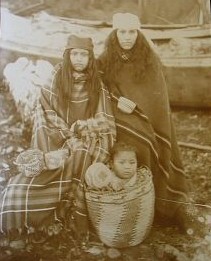 (52) 88 |
|||
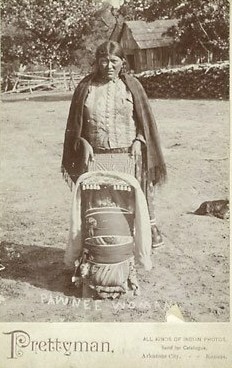 Pawnee woman and papoose (3) (30) |
||||
 Sitting Bull the famous Sioux in a studio setting, not keeping in his attire.(1) (29) 91 |
 Buffalo Chief possibly Sioux or Cheyenne (29) 92 | |||
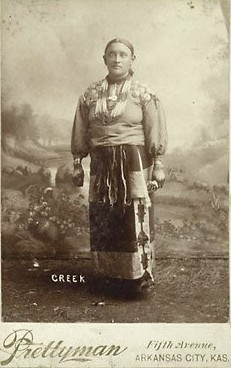 Creek in native costume - rare (3) (30) 93 | ||||
 Big Tree, a Kiowa Chief (29) 95 |
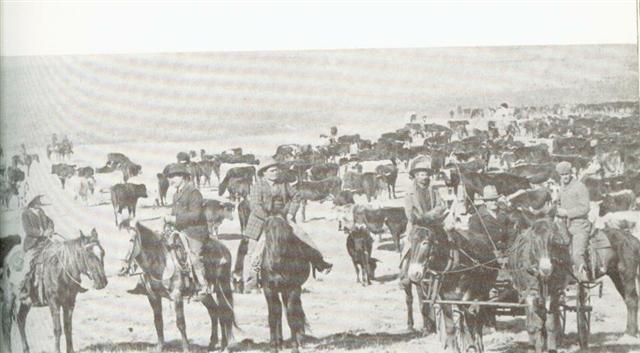 Roundup in the Cherokee Strip(1) (3) 96 | |||
 A Kaw indian holds a quirt. (36) 97 |
.jpg) The day of the cattleman in the indian territory was brief, about twenty years. 1885 (1) (58) 98 | |||
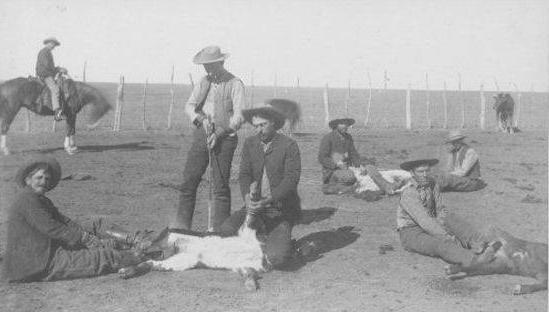
Men with bark on branding Cows (1) (3) (61) 99 |
.jpg) Watering and cooling a herd in the Salt Fork River about 1887, part of the Ross Stratton spread. (1)
| |||
.jpg) A huge ranch of its time, with many hands, was administered in the Outlet from a modest cabin such as this, pictured under construction about 1883. (1) 103 |
.jpg) Dick yeager, a good cowboy turned outlaw.(1) 104 | |||
.jpg) November 1896 recreation of battle with Dynamite Dick and Ben Cravens against peace officers. (1) 105 |
||||
.jpg) Dynamite Dick, outlaw (1) 107 |
.jpg) These horses were ridden to the battle scene. Cravens was injured but survived. (1) 108 | |||
.jpg) Deputy United States Marshal Cheeseman (1) 109 |
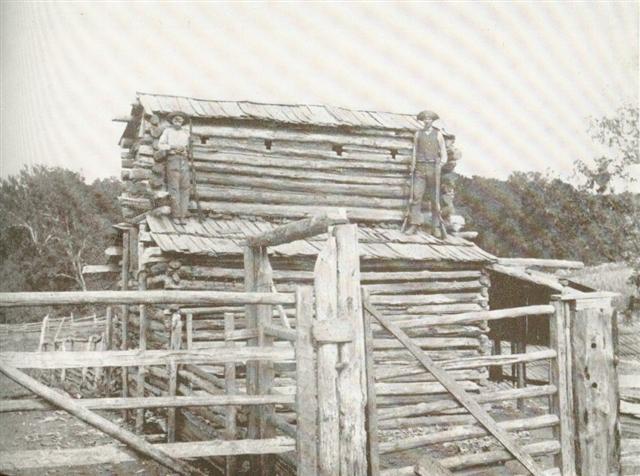 The Triangle area. The Jordan Blockhouse. Two men guarding home of J.W. "Cherokee" Jordan, located at mouth of the Cimarron River, 1888 (1) (58)
|
|||
.jpg)
The Triangle area, a hunter's paradise. In front of the Barker outlaw cave is left to right, the Reverend A. C. Kronk, J. W "Cherokee" Jordon, and W. S. Prettyman. (1) (58) 111 |
.jpg) An encampment of those awaiting the start of the opening of the Oklahoma District or "Unassigned Lands" 1889. (1) (26) 112 |
|||
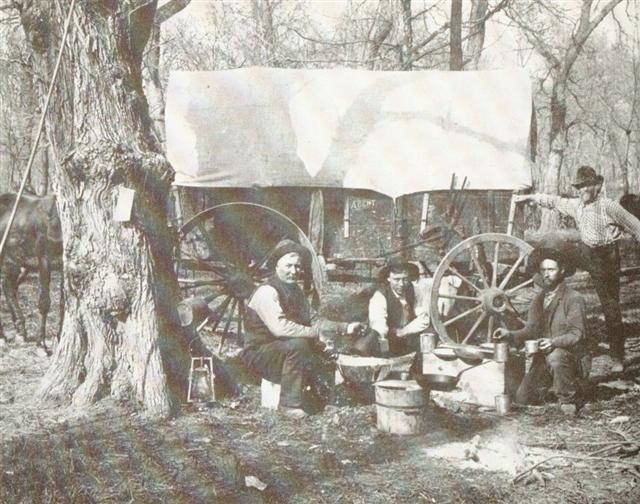 A few days before the Run of 1889. Prettyman's attempt at candid photography shots. Photo also credited to Cunningham. (1) (3) (8) 113 |
||||
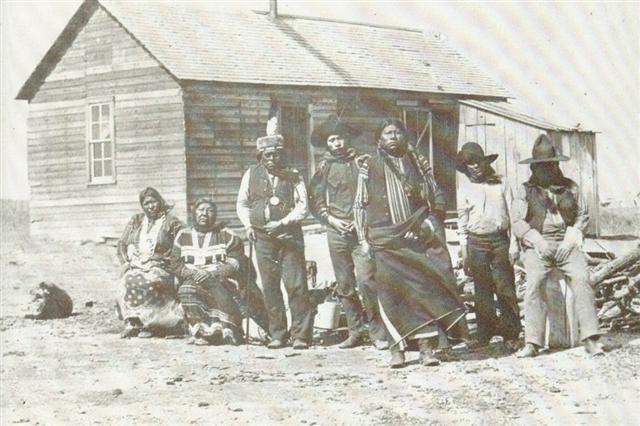
Tonkawa family Osages leave wickiup in favor of frame dwelling, a winding March day. (1) (3) 115 |
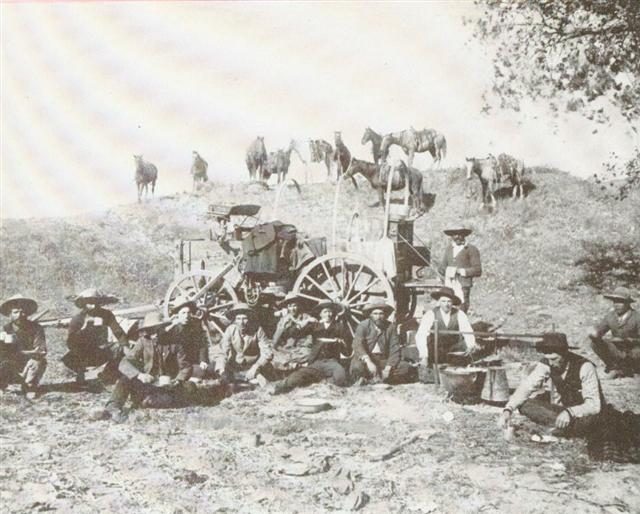 Turkey Creek Ranch near Enid, 1880s. Cowboys at dinner. (1) 116 | |||
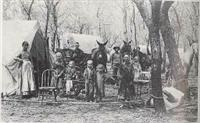 A frontier "Bommer" family encamped but on the move West. Only one-third of those who made the run were successful. These kids and parents were moving towards destiny in a new land April 1889. Stillwater ? (1) (2) (3) (12)(68) 117 |
.jpg) Source of drinking water became a problem. One enterprising future citizen roofed over a spring and was selling water by the pail. (1) 118 |
|||
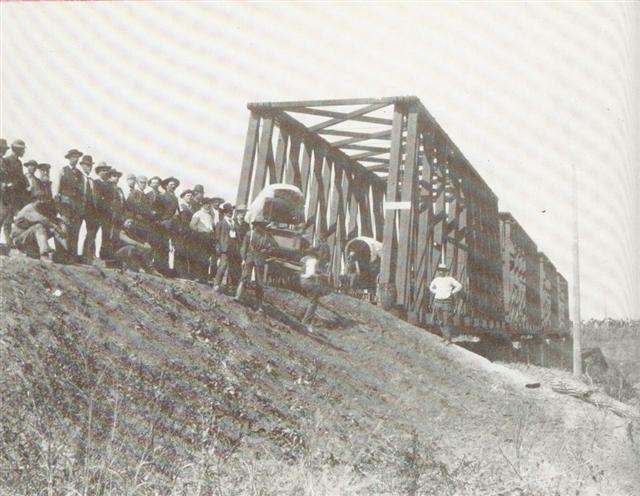 500 wagons crossing the Salt Fork on the RR Bridge to get into position for the 1889 Run. Captain Jack Hayes, the escort officer on duty at this point, secured heavy timbers, laid them across the steel rails of the railroad bridge, and marshaled the able-bodied males for the arduous job of pushing and pulling thousands of heavy wagons across the stream. (1) (3) 121 |
||||
.jpg) The last hours before the Run of 1889 are whiled away. 123 |  The gentleman on the right is holding either a Winchester 1901 or Winchester 1887 lever action shotgun. The other guns depicted are believed to be a Hotchkins (left) and a Springfield (center). On the back of the photo are the names, left to right, Geo Eagle, Stack Lee, White Eagle, and W.S. Prettyman. (50) 124 | |||
.jpg) Yesterday the prairie, today a city is born. 4pm April 22, 1889 as the city of Guthrie emerged. (1) 125 |
||||
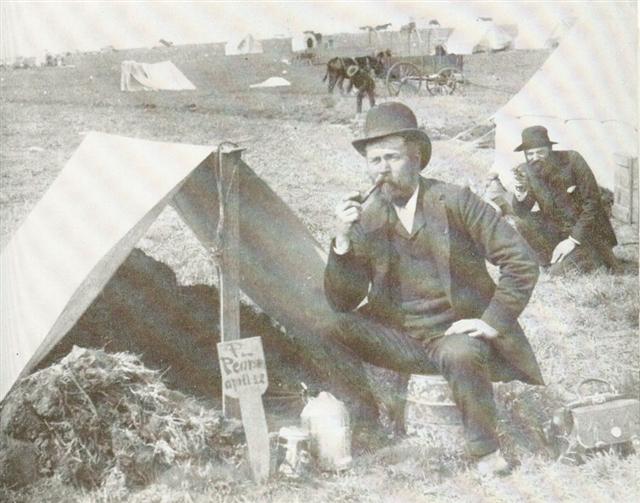 "Holding a Town Lot" Peter Pearson, nearest the camera, and Dr. Aker in the rear, who are founding fathers of Guthrie. Photo is credited to Prettyman, Cunningham, and Fred Wenner. (1) (8a) (9) 126 |
.jpg) By mid-afternoon on April 22, 1889, claimants of homesteads appeared in front of the land office at Guthrie to establish legal rights to their lands. Lot claimants were not eligible to file here; they simply had to fight it out for a few months. (1) 127 |
|||
.jpg) Oklahoma Lawyers ready for business, using a trunk and a wooden box for an office. Guthrie, Oklahoma Territory, April 22, 1889 Photo also credited to Fred Wenner, Photographer. (1) (9) 128 |
.jpg) April 22, 1889, awaiting the arrival of a train coming south through the Indian Territory, awaiting news from home. (1) 129 |
|||
.jpg) Just five days after the first town lots had been claimed at Guthrie, some thousand people were buzy creating permanent structures. In the distance tents are streched to the horizon. (1) 130 |
.jpg) May 1889 Oklahoma City, looking west on California Avenue. (1)
|
|||
.jpg) Indians from Guthrie and their agents posed, at this site the first capitol of the future Oklahoma was to be built. (1) 132 |
.jpg) City building was not for everyone, here country folks are getting busy with the business of crops and ranching. (1) 133 |
|||
.jpg) May 14, 1889 Guthrie residents staged a special show for a visiting congressman, who backed the Oklahoma Bill. (1) 134 |
||||
.jpg) April 19, 1892 the assembling land rushers who would dash into Cheyenne and Arapahoe country. (One of the five land rushes) (1) (8) 136 |
.jpg) 7 am , September 11, 1893 five days before the great run was made into the Cherokee Outlet. On the line registering to go into the strip. Olando, O.T. (1) (2) 137 |
|||
 (45)
| ||||
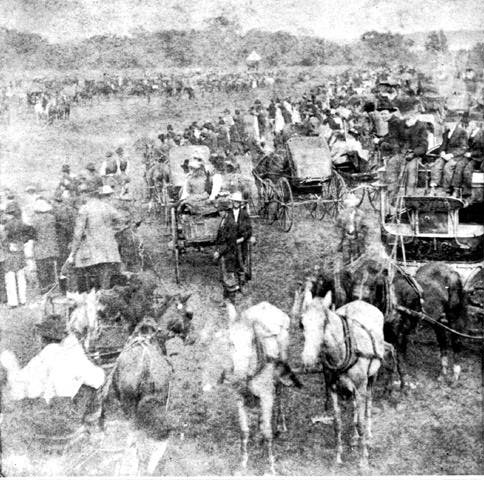 Wagons Ready for the Opening of the Cherokee Strip in 1893 (6) 142 | 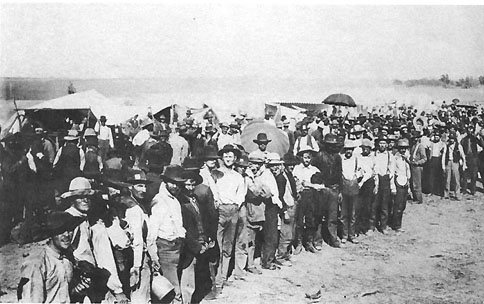 Waiting To Sign Up For The Cherokee Strip Run, Sept. 16, 1893 (6) 143 | |||
 Land Opening 1983 Registering at Booth # 9; Arkansas City, Ks. September 11 - 15 , 1893 (4) (13) (27) 144 |
||||
.jpg) Land Opening 1893, Lining up in Arkansas City, Ks One of three photos Prettyman and his associates made, before the race started. In a few minutes he joined the race, leaving picture taking to his associates. The first use of a high platform to take the picture known. (1) 146 |
 1893 Cherokee Outlet Photo 2 of 3, John Sherwood is on the white horse. Elias McClenny is ahead of John. Fred McClenny is just behind John. High noon September 16, 1893, taken by one of Prettyman associates. (1) (11) (13) (19) (21) (22) (23) (24) (25) 147 |
|||
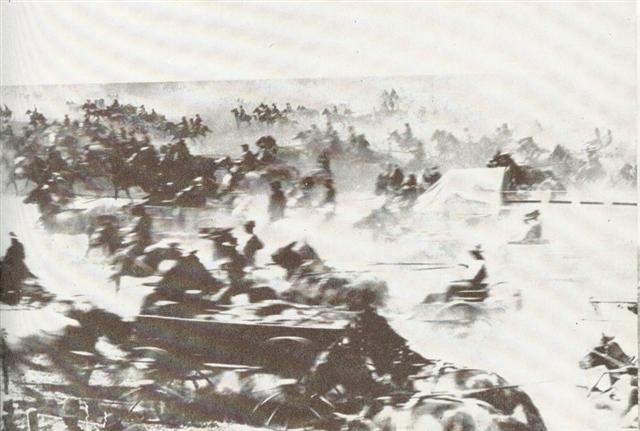 Photo 3 of 3 Two seconds later another associate took this picture. The slower wagons have replaced the horses in this view. The picture was considered too blurred at this time to use. Sept. 16, 1893. Credited to Cunningham(1) (8) 148 |
||||
.jpg) The horse, the claim, the virgin prairie in the Cherokee Outlet monents after the great race began. The claim was Prettyman's, as was the horse. (1) 150 |
.jpg) The Cherokee Outlet was destined, mainly, for wheat culture, but the prairie sod was first broken by oxen. The soil was blessed by calcium and phosphorus, rich beyond the Imaginings of the Pioneers. (1)
| |||
.jpg) The run into the Cherokee Outlet was made in earliest autumn, but on these plains the chills winds came soon after. Building materials were scarce - much of the country was treeless. Soddies were constructed from chunks of prairie turf. (1) 152 |
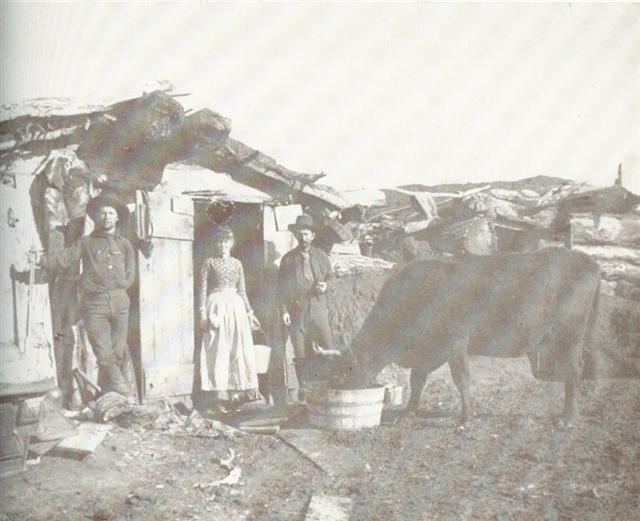 Frontier home As the months passed, some of the "amenities" of settled like began appear. (1) (3) 153 |
|||
.jpg) If a man had a shotgun he could live well off the prairies awaiting his first crops.(1) 154 |
.jpg) One year after the run in 1894, more comfortable, "Full Soddies" began to appear. (1) 155 | |||
.jpg) A few years later, frame homes appeared. The grains shocks in the background bespeak properity from the rich soil. (1) 156 |
.jpg) In less than 6 years, the cow pasture appearance of the Cherokee Outlet was gone and true affluence began to be evident. On the land near the claim he had staked and sold, Prettyman made this picture of a bountiful harvest. The Oklahoma that Prettyman loved was no more (1) 157 | |||
.jpg) A Quapaw Family and their dwelling at the time of the first runs, eastern and southern territories. (1) 158 |
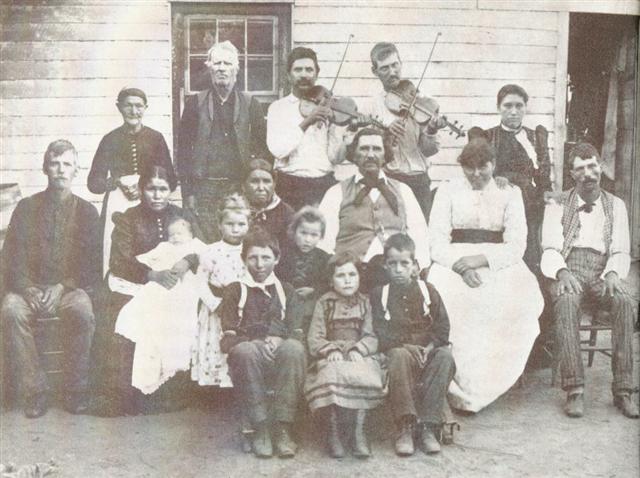 Group shot of settlers and Indians (1) (3) 159 |
|||
.jpg) Prettyman could not reconcile large scale farming and livestock raising, permanent dwellings, and fences with Indian life. He therefore spent little time with the Five Civilized Tribes, but here is another one of his views revealing the unmistakable southern influences upon these tribes.(1) (3)
| ||||
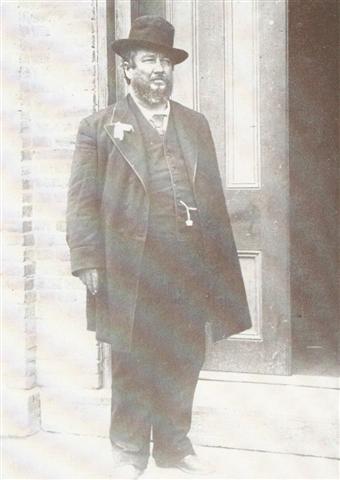 Joel Mayes, Chief of the Cherokees show the influence of civilization. (1) (3) 162 |
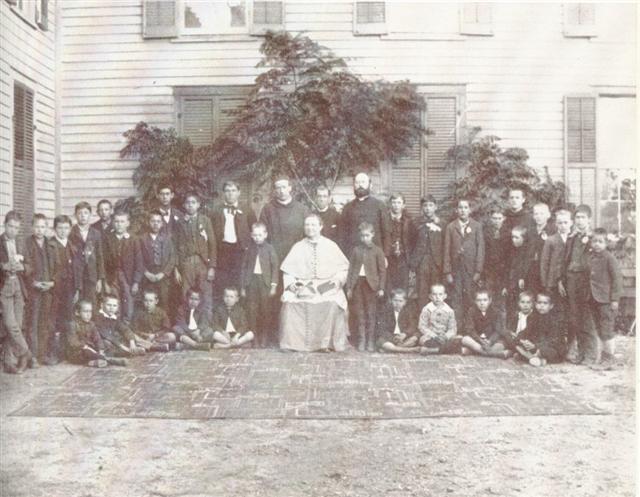 Bishop, priests, Indian boys, teachers, and students at "old" Sacred Heart Mission in the Shawnee country before the turn of the century. (1) (3) 163 |
|||
 (27)
| ||||
 James H Logan; Conductor (46) 192 |
||||
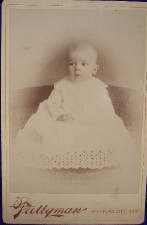 Possibly a member of the Hattie Kellogg family (44) 196 |
||||
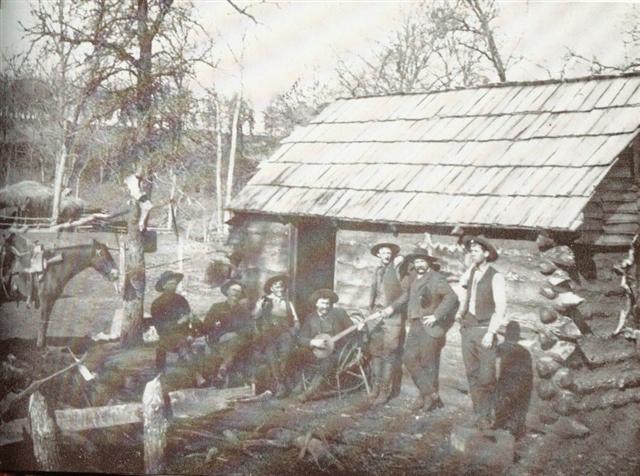 Cowboys in camp KKK Ranch, 1885 Ross Stratton owner, north of Kaw Reservation (3) 200 |
||||
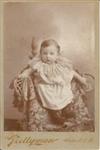 (54) 203 | ||||
 Pawnee Bill, also known as Major Gordon W. Lillie, an interpreter of the Pawnee tribe and the man credited with the opening of the Cherokee Strip. (47) 204 |
.jpg) Prettyman Studio was responsible for many of the before and after pictures of young Indians who went off to the white man's school. (57) 205 | |||
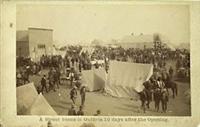 A street scene in Guthrie 10 days after the opening. (26) 206 |
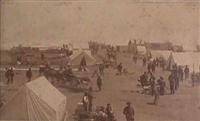 Guthrie - A City of Tents (49) 207 | |||
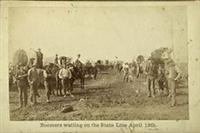 Boomers waiting on the State Line April 19th, 1889 (26) (66) 208 |
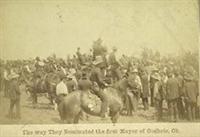 The way they nominated the first mayor of Guthrie. (4) (61) 209 |
|||
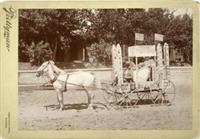 Horse-drawn parade wagon float, with a young man and his wife, whom we presume to be the Prettyman's. A flag topped awning announcing "Prettyman" protects the lady from the sun, it's supporting posts decorated . (28) 210 |
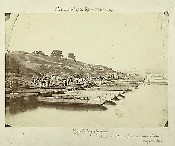 Bridge Building (30)
| |||
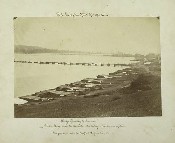 (30) 212 |
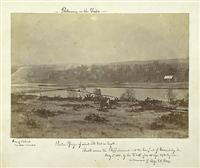 (30) 213 | |||
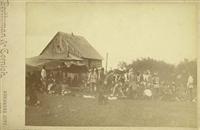 This one and the next, both taken on the same day in the summer of 1889. as evidenced by the floral decorations on the clothing, the participants are Osage (37) 214 |
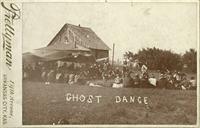 (37) 215 |
|||
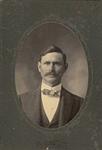 Unknown gentleman Blackwell, Oklahoma (48) 216 |
 Woody Jones(53) 217 | |||
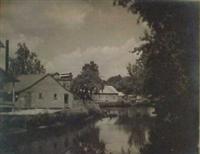 Serenity (56) 218 |
 (55) 219 | |||
 (59) 220 |
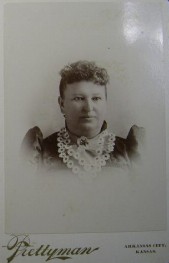 (60)
| |||
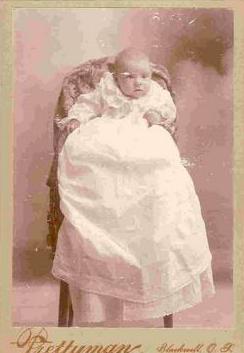 (64) 227 | ||||
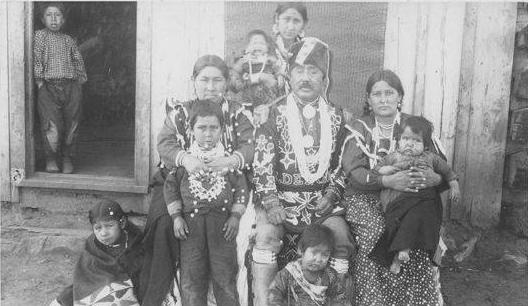 Otoe indian , two wives and family(61) 228 |
||||
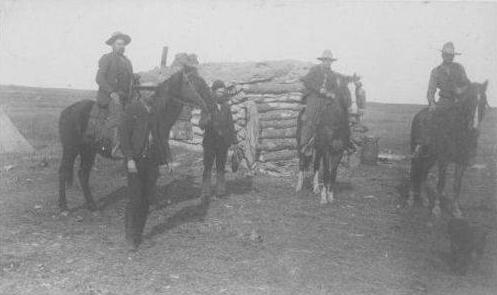 Boomers Claim Shanty, Oklahoma Territory (61) 230 |
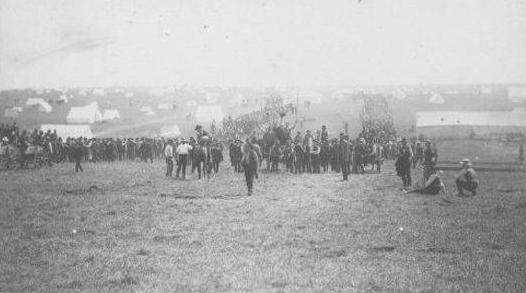
The Way They Voted for the First Mayor of Guthrie (61)
| |||
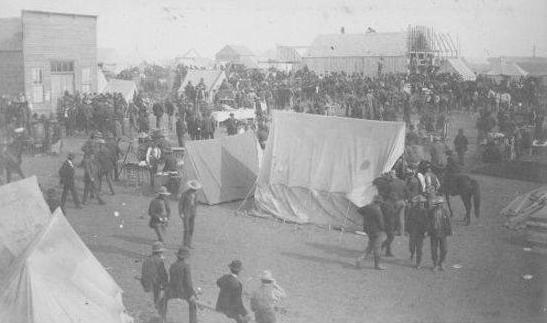 A Street Scene in Guthrie 10 days after the opening. (61) 234 |
||||
 The Cyclone, May 12th, 1896,4:00 P.M., five miles north of Oklahoma City, O.T., Written on Back "Having opened one of the finest photographic studios in the west, I am now prepared to execute strictly first class work. Will make a specialty of enlarging in Crayon, Pastel, Water color, and India Ink. Satisfaction guaranteed on all work. Respectfully, W. S. Prettyman. Over Andersonís Drug Store, Blackwell, O.T." (62) 236 |
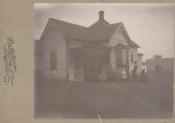
(63) 237 | |||
 (69) 239 |
||||
 Beef Issue at Cheyene - Arapaho Agency, Darlington 1889 The cattle were released from the coral, men on horseback chased. (67)
| ||||
 [Back to main]
[Back to main]
Thank you for visiting WSPrettyman.FreeServers.Com
You are visitor # 



This page created August 2004; Revised February 2005, Revised June 2007, 10/2010, July 2023